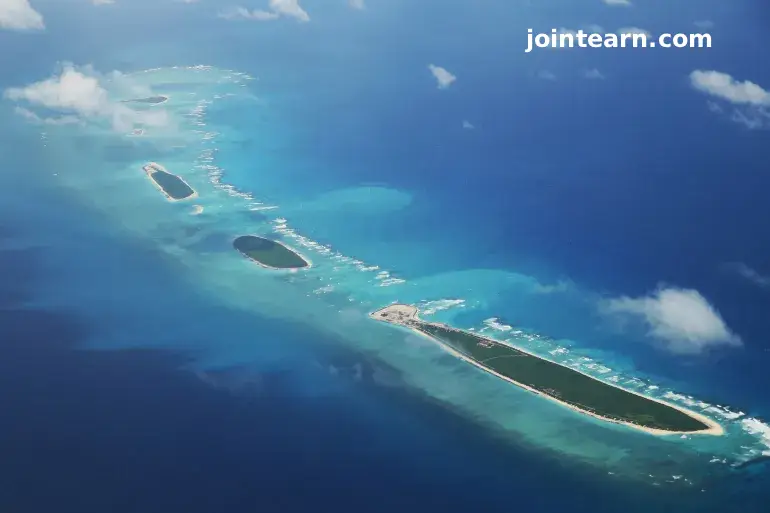
China has accused Australia of concealing an “illegal intrusion” into Chinese airspace, intensifying a diplomatic row over a recent South China Sea military incident that both countries have described in sharply contrasting terms.
The Chinese Ministry of National Defence on Tuesday condemned what it called Australia’s “egregious illegal intrusion” by its military aircraft and accused Canberra of attempting to “cover up” the event through misleading statements.
The dispute marks a new flashpoint in China-Australia relations, already strained by ongoing disputes over AUKUS, critical minerals, and maritime security in the contested waters of the South China Sea.
China Says Australia ‘Illegally Entered Chinese Airspace’
At a press briefing in Beijing, Chinese Defence Ministry spokesperson Jiang Bin said that China had lodged a “solemn complaint” with Australia regarding the incident.
“Australia has attempted to shift blame onto China while covering up its illegal intrusion into Chinese airspace,” Jiang told reporters. “We urge Australia to restrain the actions of its frontline naval and air forces and avoid damaging China-Australia relations.”
According to Jiang, the encounter took place over the Xisha Islands — Beijing’s name for the Paracel Islands, which China administers but are also claimed by Vietnam and Taiwan.
China said the Australian military aircraft’s actions were “provocative” and violated Chinese sovereignty.
Australia Alleges Chinese Jet Released Flares Near Its Plane
The Chinese statement came one day after Australia’s Defence Ministry accused a Chinese fighter jet of conducting an “unsafe and unprofessional” maneuver during a Royal Australian Air Force (RAAF) maritime surveillance mission on Sunday.
In its statement, Australia said the Chinese Air Force jet released flares dangerously close to an Australian patrol aircraft conducting a “routine operation” in international airspace over the South China Sea.
“For decades, the Australian Defence Force has undertaken maritime surveillance activities in the region and does so in accordance with international law,” Canberra said.
The Australian Defence Force (ADF) did not specify the exact location of the incident. However, China’s claim that it occurred over the Paracel Islands suggests Beijing views the operation as a violation of its territorial boundaries.
A History of Similar Military Clashes
This is not the first time China and Australia have clashed over airspace and maritime activities.
Earlier this year, both nations exchanged accusations following another mid-air confrontation between their military aircraft in the same region.
China claims sovereignty over nearly the entire South China Sea, a waterway crucial for global trade and rich in natural resources. However, a 2016 international tribunal ruling in The Hague found no legal basis for China’s sweeping claims — a ruling Beijing continues to reject.
Australia, alongside allies including the United States, Japan, and the Philippines, has repeatedly called for freedom of navigation and overflight in the South China Sea under international maritime law.
Diplomatic Tensions Rise Amid AUKUS and Rare Earth Deal
The timing of the latest incident coincides with Australian Prime Minister Anthony Albanese’s visit to Washington, where he met with US President Donald Trump to strengthen bilateral cooperation under the AUKUS security pact.
During their meeting, the two leaders announced an agreement for Australia to supply rare earth and critical minerals to the US, following China’s decision to restrict exports of these strategically vital materials.
Trump praised progress on the nuclear-powered submarine program, saying:
“The submarines that we’re starting to build for Australia are really moving along.”
The deal, first signed under former President Joe Biden, involves the US providing at least three Virginia-class nuclear attack submarines to Australia.
Beijing has repeatedly opposed the AUKUS pact, calling it a threat to regional peace.
“We always oppose creating bloc confrontation, increasing nuclear proliferation risks, and intensifying an arms race,” said Chinese Foreign Ministry spokesperson Guo Jiakun on Tuesday.
South China Sea: A Regional Flashpoint
The South China Sea remains one of the most militarized and disputed regions in the world. It is a major trade route, carrying over $3 trillion in goods annually, and a focal point for overlapping territorial claims by China, Vietnam, the Philippines, Malaysia, Brunei, and Taiwan.
China’s construction of military outposts, radar systems, and runways on artificial islands has drawn strong criticism from Western nations. Australia continues to conduct freedom-of-navigation patrols, insisting that its operations are lawful and non-confrontational.
However, Beijing considers such activities provocative and an affront to its sovereignty, often responding with warnings or military interception maneuvers.
Experts Warn of Escalating Military Risks
Regional analysts warn that recurring close encounters between Chinese and Australian forces could heighten the risk of miscalculation or unintended escalation.
Dr. Marianne Turner, an Asia-Pacific security expert at the University of Sydney, said the latest episode “reflects the growing volatility of the South China Sea, where even minor incidents can spiral into diplomatic crises.”
“China’s increasingly assertive posture and Australia’s commitment to alliance-based freedom-of-navigation operations are on a collision course,” Turner noted.
Looking Ahead
The Australian Defence Ministry has said it will continue to conduct “routine and lawful” surveillance operations across the Indo-Pacific region. Meanwhile, China has signaled it will intensify air and naval patrols to “safeguard national sovereignty.”
With both sides refusing to back down, the South China Sea dispute continues to serve as a barometer of rising geopolitical competition between Beijing and Canberra, as well as their broader ties with Washington.


Leave a Reply